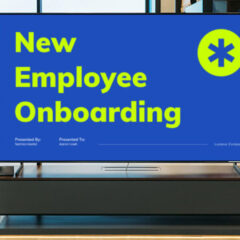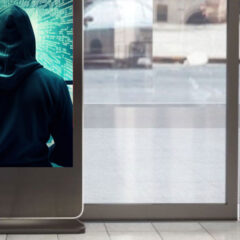Restaurants Putting Digital Content on the Menu

The ability to reach customers near the point of purchase has always been one of the chief benefits of digital signage. Strategically placed digital signage can have a strong influence on the customer experience — provided you have an effective content strategy. Digital signage requires a continual stream of fresh, relevant content that can be quickly updated, modified and rotated.
The restaurant industry has become particularly adept at leveraging digital content to keep guests engaged, informed and entertained. Go to just about any quick-service restaurant (QSR) and you can see how signage has impacted operations. Behind-the-counter and drive-thru digital menu boards are obvious use cases, but the industry has found many other ways to use the technology to engage customers.
Restaurant Use Cases
According to one study, QSRs account for 20 percent of all digital signage sales. Here are just a few of the use cases:
- Interactive displays in waiting areas can entertain customers and reduce perceived wait times. Guests can play games, watch the news, read nutrition information or even access external data sources.
- Tabletop signage can also be used to showcase menu items, season specials and other in-store promotions. They can also be used for games and other guest entertainment options.
- Self-service kiosks reduce wait times through a quick and easy ordering experience. They can also enable contactless ordering and payment processes.
- Wall-mounted signs throughout the store can be used to entertain guests with sports programming or trivia contests, promote upcoming events, or upsell food and beverages.
- Back of the house signs improve employee engagement, offering training modules, food safety instructions, and help improve operational efficiencies.
Content Management is Key
None of this technology will mean much without an effective content management strategy. Without engaging, current and relevant content, your displays won’t make much of an impact on customers.
Most content management systems (CMS) can handle basic tasks such as remotely programming and updating menu boards. This gives you the flexibility to add or remove menu items and adjust prices as needed. CMSs also enable automatic dayparting for changing menu items based on the time of day.
Market-leading CMSs enable more sophisticated capabilities. For example, menu boards can be integrated with inventory and point-of-sale (POS) systems to discount slow-moving items and remove out-of-stock items from the menu. With such integration, any price changes in your POS system can be automatically changed on menu screens.
The Video Component
An enterprise-class CMS is also critical for handling increasing amounts of video content. Without a strong management strategy, videos tend to get stored haphazardly across the environment — on local hard drives, on network or cloud servers, in online file-sharing systems, in other file repositories such as SharePoint, or even in email systems. CMS solutions consolidate videos in a central library where they can be easily accessed, edited and uploaded.
Video-capable CMSs also resolve interoperability issues with different video file types such as AVI, MP4, MKV and MOV. A file saved in one format may not be playable on many devices until it is manually transcoded. This time-consuming process requires someone to decode the compressed video from one format and re-encode it to another. Leading CMS solutions eliminate this issue with automatic transcoding.
Digital signage can enhance the restaurant customer experience in multiple ways, but it requires interesting and engaging content delivered efficiently through a robust content management system. If you’re looking to implement or enhance a signage solution, give us a call. We work with best-of-breed hardware and software providers to deliver end-to-end solutions that will delight your guests and promote your brand.
More Insights
-
Digital Experiences, SageVIEW Approach
How Digital Signage Boosts Workforce Productivity
-
Digital Experiences
How Digital Signage Can Play a Role in Reducing Workplace Stress
-
Digital Experiences
7 Steps for Upgrading and Enhancing a Digital Signage Network
-
Digital Experiences
Why You Should Make Digital Signage Security a High Priority




